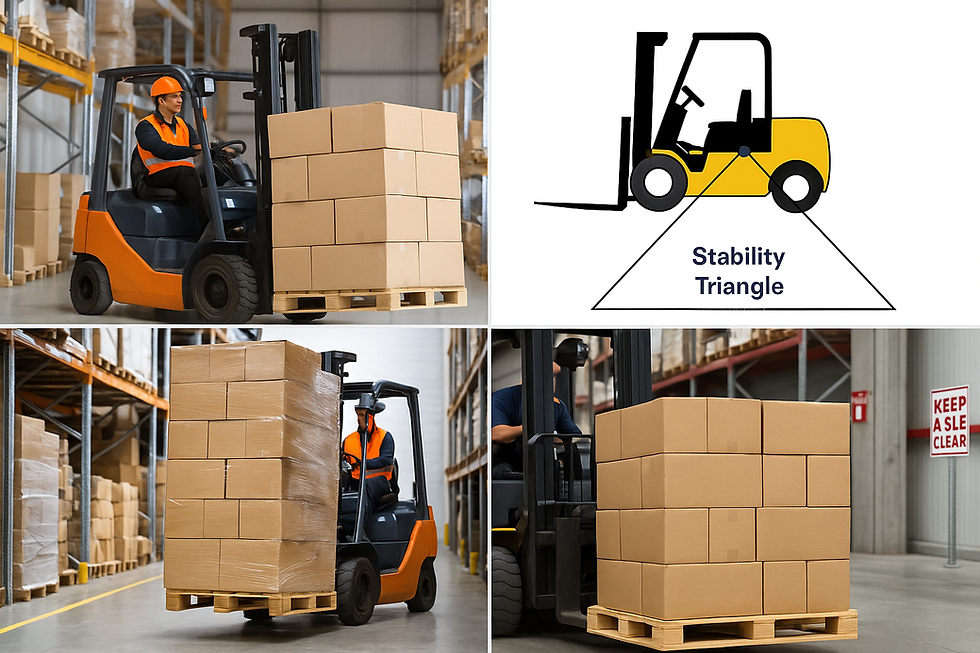Understanding Forklift Load Stability & Safe Stacking
- Alan Pacheco
- Oct 12
- 2 min read

Forklifts can lift thousands of pounds with ease — but an unstable load can spell disaster. Improper stacking and load handling are major causes of forklift tip-overs, falling loads, and workplace injuries. By mastering the basics of load stability, operators can prevent accidents and keep warehouses running safely.
The Stability Triangle
A forklift’s balance is based on the stability triangle:
The triangle connects the two front wheels and the pivot point of the rear axle.
The combined center of gravity of the forklift and its load must stay inside this triangle to remain stable.
If the center of gravity moves outside, the forklift tips.
Operator takeaway: Keep heavy loads low, balanced, and close to the mast.
Factors That Affect Load Stability
Load Weight and Size
Overloading or handling oversized pallets shifts the center of gravity.
Always check the forklift’s capacity plate before lifting.
Load Height
Raising a load makes it less stable.
Keep loads as low as possible when traveling.
Load Positioning
Tilt the mast back slightly to secure the load.
Ensure pallets are evenly stacked with no loose or broken boards.
Surface Conditions
Uneven floors, ramps, or potholes shift the center of gravity.
Drive slowly and carefully in these areas.
Safe Stacking Practices
Stack pallets evenly with no overhang.
Place heavier items on the bottom layers.
Use stretch wrap or banding for loose items.
Never stack loads higher than what you can see over.
Common Mistakes to Avoid
Traveling with a raised load.
Lifting loads with damaged pallets.
Carrying unevenly distributed cargo.
Turning quickly with a high or heavy load.
Quick Checklist for Operators
✅ Check load weight and pallet condition.
✅ Keep loads low while driving.
✅ Center and secure loads before lifting.
✅ Drive slowly on ramps and uneven floors.
Load stability is one of the most important parts of forklift safety. With proper stacking, positioning, and awareness, operators can protect themselves and everyone around them.
Tomorrow’s article: CPR for Children & Infants: Key Differences You Must Know.



Comments